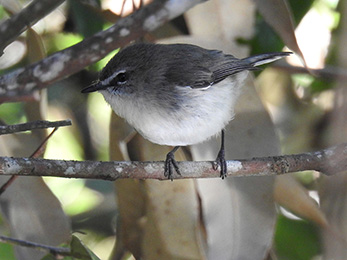GERYGONES
Gerygones are known for their diminutive size, active foraging habits, and distinctive vocalizations. They are small birds, typically measuring between 10 to 13 cm in length, with short, rounded wings and slender bills, which they use for probing for insects and other invertebrates. Their plumage is generally dull and cryptic, with shades of brown and grey, often with a streaked or speckled pattern. They are part of the Acanthizidae family.
Gerygones are primarily woodland birds and can be found in a range of habitats, including eucalypt forests, heathlands, and scrubby areas. They are particularly common in the eastern and southern parts of Australia.
Gerygones are active and agile foragers. They feed mainly on insects, spiders, and other small invertebrates, which they glean from leaves and bark or catch on the wing. Their ability to move quickly through foliage makes them well-suited to their insectivorous diet.
Gerygones are known for their musical and melodic calls. They often sing from concealed perches within the foliage and use their vocalizations to communicate with others and establish territory.
Gerygones typically build domed-shaped nests that are suspended from the branches of trees and shrubs. These nests are often well-concealed within the vegetation. They lay small, speckled eggs and may raise multiple broods in a single breeding season.
Gerygones are generally seen in pairs or small family groups. They are territorial and defend their feeding areas from other individuals of the same or similar species.
The conservation status of various Gerygone species can vary, but in general, they are not considered globally threatened. Habitat loss and fragmentation, however, impact their populations in certain areas.




